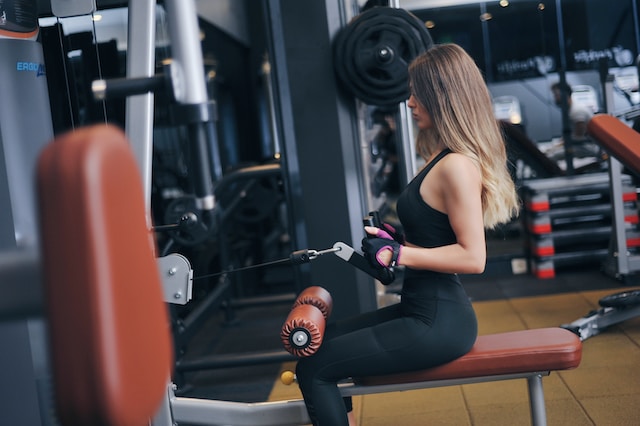Exercise routine for beginners: Ultimate guide to starting out
As fitness enthusiasts and guides at Mirthcamp, we understand the exercise journey can be daunting for beginners. That’s why we’ve crafted this comprehensive guide, tailored to help create a exercise routine for beginners to embark on your fitness journey with confidence and clarity.
What is a good exercise routine for beginners?
A well-structured exercise routine for beginners should encompass various aspects of physical fitness to ensure a holistic approach. Key components include chest workouts, leg exercises, back exercises, cardio sessions, balanced nutrition, and sufficient rest. Each element plays a vital role in creating a foundational fitness regime that promotes overall health and well-being. While delving into each component, it’s crucial to remember that starting simple and gradually increasing complexity is the essence of a successful beginner’s workout plan.
Chest workouts for beginners
The journey to building upper body strength begins with chest workouts. For beginners, it’s important to start with exercises that are manageable yet effective. Basic chest workouts not only enhance muscle strength but also contribute to better posture and core stability. To get started, simple exercises like modified push-ups or light dumbbell presses can be incredibly effective. For an in-depth guide to chest workouts at home, beginners can explore Best Chest Workout at Home, offering a variety of exercises tailored to different fitness levels.
Leg workouts for beginners
Leg workouts form a critical component of a balanced exercise routine. Strengthening the lower body is essential for overall fitness, and for beginners, there are numerous exercises that can be performed without any specialized equipment. Starting with basic squats, lunges, and calf raises can lay a solid foundation for leg strength. As endurance and strength build, the intensity and complexity of these exercises can be gradually increased. For comprehensive guidance on leg exercises, beginners can refer to Leg Day Workout for detailed routines and tips.
Back workouts for beginners
Working out your back is just as important as training the rest of your body parts. A strong back will reduce the risk of back and neck pain as well as improve your posture and strength. Examples of exercises you should perform during your back workouts are lat pulldowns or pullups, different row variations, superman as well as deadlifts. For comprehensive guidance on back exercises, you can refer to Back Workout for detailed routines and tips.
The role of cardio in beginner routines
Cardiovascular exercises are fundamental for improving heart health and building endurance, especially for beginners. Starting with low-impact activities like brisk walking, cycling, or swimming can be a great way to ease into a fitness routine. These exercises help in gradually enhancing stamina and preparing the body for more strenuous workouts in the future. For a detailed guide on light cardio workouts suitable for beginners, visit Light Cardio Workouts: Your Guide to Healthier Living.
Nutrition and exercise
A balanced diet plays a crucial role in supporting an exercise routine. For beginners, focusing on a diet rich in nutrients, proteins, and healthy carbohydrates is essential for fueling the body and aiding recovery after workouts. Hydration is also a key aspect, as it significantly impacts exercise performance and recovery. Beginners should strive for a nutrition plan that complements their fitness goals and exercise intensity. For more insights into aligning your diet with your workout regimen, check out Nutrition.
Rest and recovery for beginners
Rest and recovery are as important as the workouts themselves, especially for beginners. Adequate rest days are essential for muscle repair, growth, and preventing injuries. Quality sleep also plays a pivotal role in recovery, ensuring the body gets the rest it needs to repair and strengthen itself. Beginners should listen to their bodies and not underestimate the power of rest days. To understand more about the benefits of sleep in muscle recovery, beginners can explore The Role of Sleep in Muscle Recovery.
Building a sustainable exercise routine
Creating a sustainable exercise routine is pivotal for long-term success in fitness, especially for beginners. The key is to establish a routine that is both enjoyable and challenging, while also being realistic and achievable. It’s important to start with exercises that align with your current fitness level and gradually increase the intensity and complexity as you gain strength and confidence. Incorporating variety in your workouts not only prevents boredom but also ensures all muscle groups are engaged. Regularly updating your exercise routine can help maintain interest and effectiveness.
Overcoming common challenges for beginners
Starting a new exercise routine can present several challenges, such as lack of motivation, plateauing, or even fear of injury. Beginners should focus on overcoming these hurdles by setting small, attainable goals, seeking motivational sources, and being patient with their progress. Understanding that setbacks are a natural part of the journey is crucial. It’s also beneficial to mix up the routine to prevent plateauing and to keep the workouts engaging and challenging. [1]
Safety tips for exercise beginners
Safety should always be a top priority, particularly for beginners. It’s essential to start slow, focus on proper form, and gradually increase the intensity of workouts. Beginners should also be aware of their body’s limits to avoid injuries. If unsure about how to perform an exercise correctly, it’s advisable to seek guidance from a professional trainer. Additionally, wearing appropriate workout gear and using the right equipment can significantly reduce the risk of injuries.
Next steps after mastering the basics
Once the basic routines become more comfortable, beginners should consider advancing to more challenging workouts. This progression is vital to continue improving fitness levels, building strength, and enhancing endurance. Exploring new exercise styles, incorporating weight training or high-intensity interval training (HIIT), and joining fitness classes can add diversity and challenge to the workout regimen. Continuing to educate oneself on fitness and seeking new challenges are key to keeping the journey exciting and rewarding.
Conclusion
Embarking on an exercise routine as a beginner is a journey filled with learning, challenges, and accomplishments. It’s about understanding the basics, setting realistic goals, and gradually building your strength and endurance. Remember, consistency is key. Celebrate small victories, learn from setbacks, and always strive for progress, not perfection. With the right approach, beginners can transform their fitness journey into a rewarding and sustainable part of their lifestyle. We at MirthCamp are here to support you every step of the way, offering guidance, resources, and a community to help you thrive on your fitness journey. Embrace the journey, enjoy the transformation, and remember that every step forward is a step towards a healthier you.
Key takeaways
| Key Point | Takeaway Summary |
|---|---|
| Realistic Goals | Start with achievable fitness goals for sustainable progress |
| Exercise Variety | Incorporate cardio, strength, and flexibility in your routine |
| Nutritional Balance | Maintain a diet that supports your workout regimen |
| Rest and Safety | Prioritize rest and exercise safely to prevent injuries |
| Community Support | Seek guidance and motivation from fitness communities |
| Progress Tracking | Use tools to monitor your journey and improvements |
| Continuous Learning | Keep educating yourself and embracing new fitness challenges |
Sources:
- Source 1: mayoclinic.org

